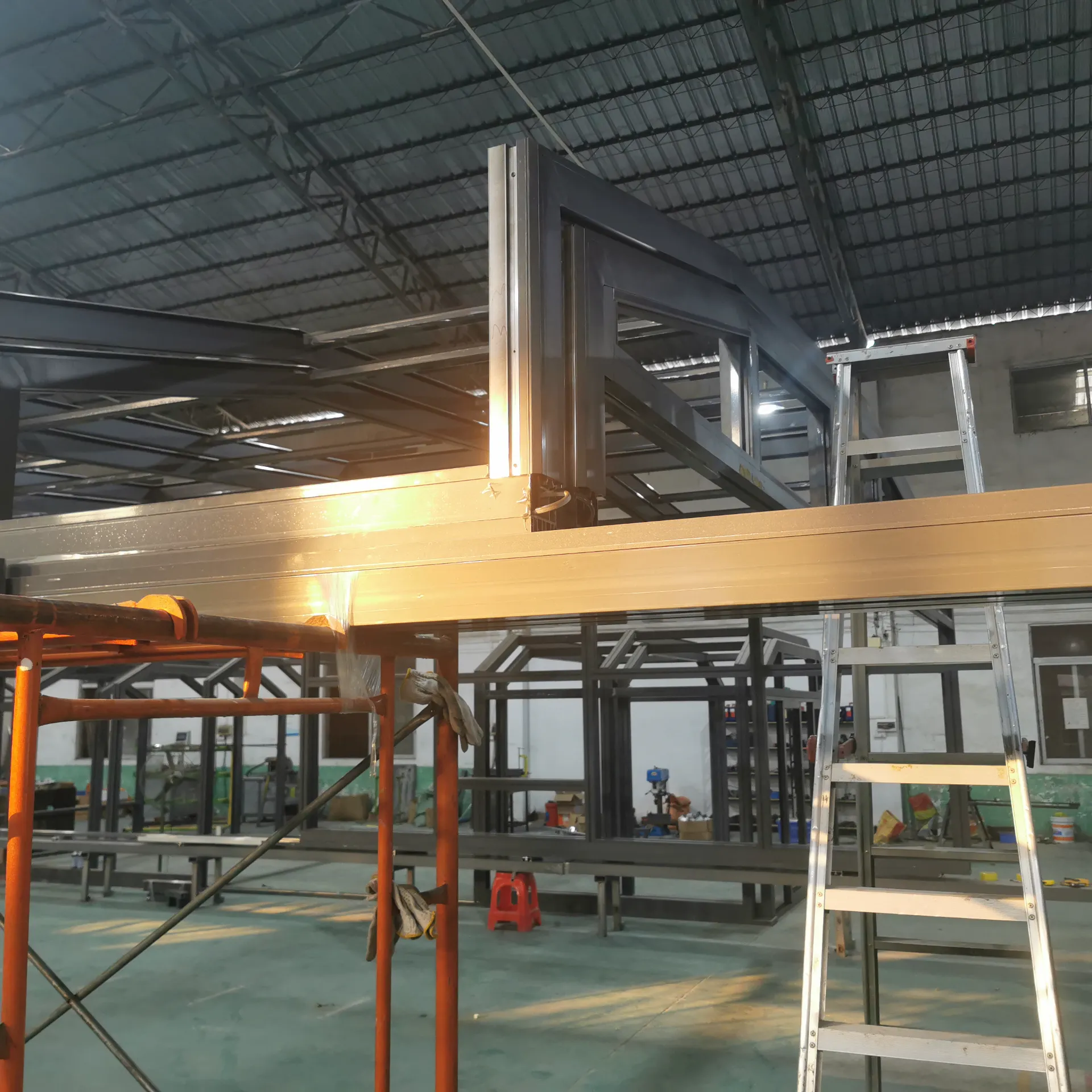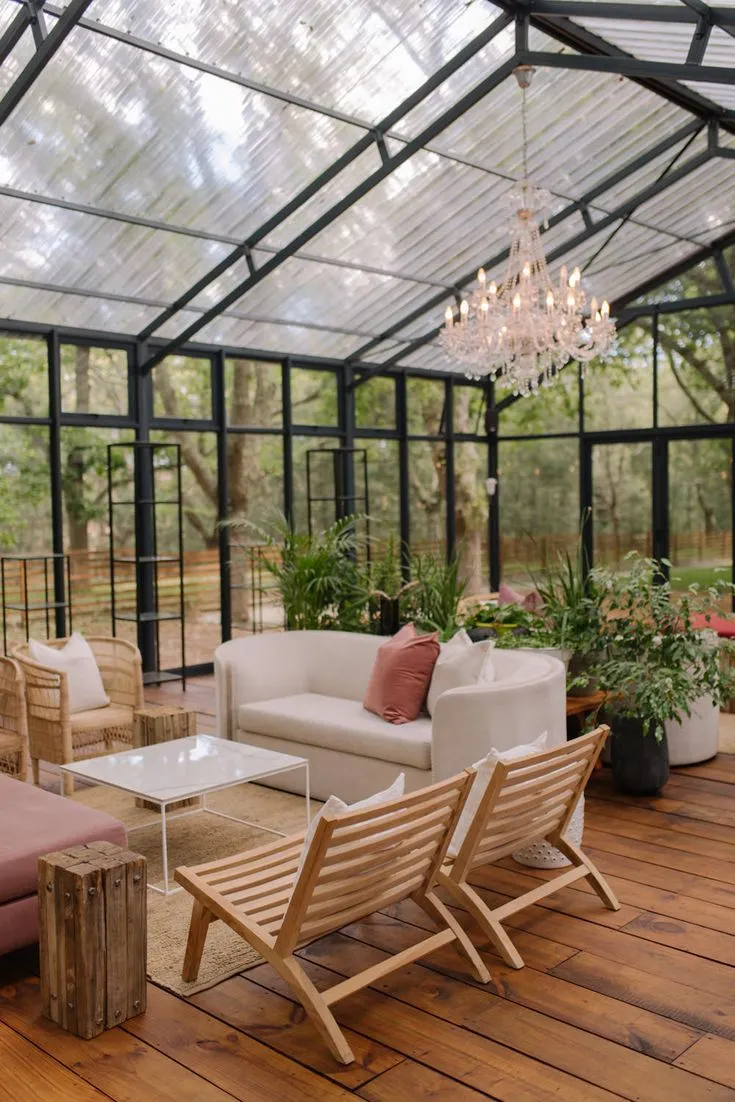- NEWS
- 6 Steps To Build A Greenhouse For Winter
6 Steps To Build A Greenhouse For Winter
Building a greenhouse for winter is a rewarding project that allows you to grow plants year-round, shield them from the cold, and create a controlled environment to foster their growth. We'll walk you through essential steps, materials, and considerations, incorporating elements like greenhouse sheets, aluminum frame kits, pvc glass, and managing temperature, humidity levels, and ventilation for optimal results.

Step 1: Planning Your Room
Location
Choose a spot with maximum sunlight exposure, especially during winter when daylight hours are shorter. South-facing locations are ideal.
Size: Determine the dimensions of your greenhouse based on the space available and the number of plants you aim to grow.
Purpose
Decide whether the greenhouse will focus solely on winter crops or be a year-round structure. This will influence the materials and insulation you choose.
Budget
Greenhouses come in a range of costs. Using high-quality materials like aluminum frame kits and pvc glass may increase upfront expenses but can save money in the long run by providing durability and better insulation.
Step 2: Choosing the Right Materials
The materials you use will impact the structural integrity, insulation, and effectiveness of your greenhouse.
Greenhouse Sheets
These are essential for covering your structure. Greenhouse sheets are lightweight and come in a variety of materials, including polyethylene and polycarbonate. Polycarbonate greenhouse sheets are an excellent choice for winter, as they offer superior insulation to keep your plants warm. Additionally, they allow ample sunlight to pass through while diffusing harmful UV rays.
Aluminum Frame Kits
For the framework, aluminum frame kits are popular due to their durability, lightweight properties, and resistance to rust. These frames are easy to assemble and can withstand harsh winter conditions, ensuring remains sturdy throughout the winter season.
PVC Glass
While traditional glass may be fragile and less insulating, PVC glass offers a heavier-duty alternative. It’s shatterproof, lightweight, and provides excellent insulation, making it a fantastic option for winter.
Insulation Materials
Consider adding bubble wrap or foam insulation to the interior of your room to prevent heat loss during freezing temperatures.
Step 3: Constructing
Building the Frame
Start by assembling the aluminum frame kit according to the manufacturer’s instructions. These kits often come with pre-cut pieces, making the process straightforward. Ensure the frame is level and securely anchored to the ground to withstand winter winds.
Installing the Covering
Once the frame is erected, attach the greenhouse sheets or PVC glass to the structure. Secure them tightly to prevent gaps where cold air might seep in. Overlap seams as necessary and use appropriate fasteners to lock everything in place.
Adding Doors and Windows
Ventilation is critical for a winter, even during the cold season. Install doors and windows with seals to regulate airflow and maintain proper humidity levels. Consider adding automated vents or fans if your budget allows.
Step 4: Managing Temperature and Humidity Levels
The success of your winter greenhouse depends largely on how well you regulate temperature and humidity levels.
Heating
To keep temperatures above freezing, install a heating system tailored to the size of your greenhouse. Options include electric heaters, propane heaters, or radiant heating systems. Make sure the heating source is safe and evenly distributes warmth.
Humidity Levels
Winter air can be dry, which may harm your plants. Use a hygrometer to monitor humidity levels and aim for a range of 50–70%. Add a humidifier or water trays as needed to maintain these levels.
Ventilation
While the greenhouse needs to retain heat, proper ventilation is necessary to prevent mold and mildew. Open vents or windows during warmer parts of the day to allow fresh air to circulate. Automated systems can adjust ventilation based on temperature and humidity, making the process effortless.

Step 5: Enhancing Insulation and Energy Efficiency
Double-Layering Greenhouse Sheets
Adding an inner layer of greenhouse sheets can create an air pocket, providing extra insulation.
Thermal Mass
Place barrels of water or stones indoor to absorb heat during the day and release it at night, helping regulate temperature naturally.
Weather Seals
Apply weatherstripping around doors and windows to seal any drafts.
Step 6: Maintaining Your Greenhouse
Once your winter greenhouse is operational, regular maintenance is key to ensuring its efficiency and longevity. Check for any tears in the greenhouse sheets or cracks in the PVC glass, and repair them immediately. Inspect the aluminum frame kit periodically to ensure no parts have loosened or corroded. Lastly, ensure your heating, ventilation, and humidity control systems are functioning properly.
Conclusion
Building a greenhouse for winter is an excellent investment in your gardening journey. By carefully selecting materials such as greenhouse sheets, aluminum frame kits, and PVC glass, and managing crucial factors like temperature, humidity levels, and ventilation, you can create a thriving environment for your plants even in the harshest conditions. With proper planning, construction, and maintenance, your winter greenhouse will provide you with beauty, productivity, and fresh produce all year long. So, roll up your sleeves and start building the perfect winter haven for your plants today!
-
Why Choose Aluminum Products: A Durable, Aesthetic, and Eco-Friendly OptionNewsJul.03,2025
-
Create a Cozy Outdoor SolariumNewsJun.05,2025
-
No.1 Pergola: Build Dream of Outdoor KitchenNewsMay.30,2025
-
Unique Superior Propertie of Aluminum ProductsNewsApr.11,2025
-
Unleash Your Potential: a Frame House AdditionsNewsMay.21,2025
-
Common Products from Aluminum PlantsNewsMay.16,2025
-
How to Build a Conservatory: The Ultimate DreamNewsMay.13,2025











